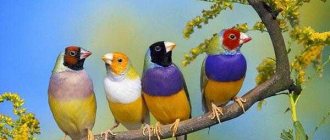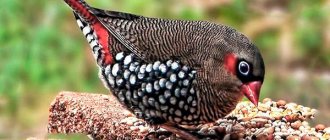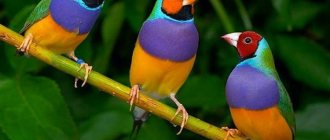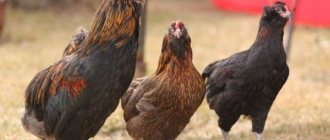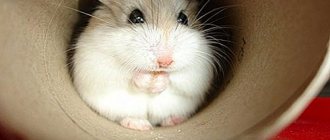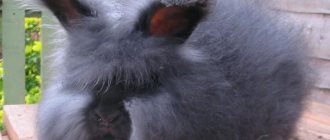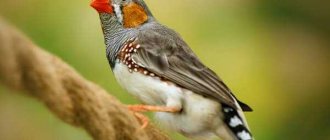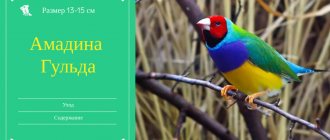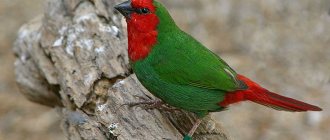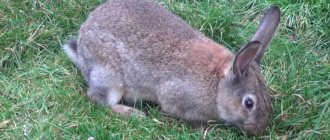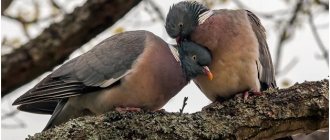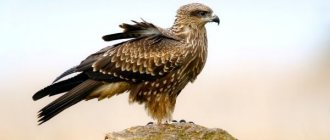The cheerful and funny finch bird is a welcome guest for those who love sonorous singing. Keeping finches does not require large financial investments or physical effort. Thanks to such unpretentiousness, combined with a peaceful character, bright songbirds have gained wide popularity. Before you bring a small feathered resident into your home, you need to find out what conditions he needs. How to prepare a room and arrange a cage, what to feed and what to do if you are sick. In addition to the basics of proper care, you should figure out whether it is possible to breed finches at home.
Red-headed Parrot Finch
Duration and lifestyle
In the wild, representatives of the species have an average life expectancy of up to 5 years. This indicator is negatively affected by:
- Diseases.
- Human disturbance of their natural habitat.
- Poaching.
- Activities of natural predators.
- Harsh living conditions.
At home, due to the careful care and care of the owner, finches can live much longer.
Most species prefer to settle in steppe flat areas. Some prefer forests in which they settle on the edges. Sometimes they can be found in semi-deserts.
The basis of their natural diet is food of plant origin, primarily seeds of various plants. Sometimes you don’t even mind pampering yourself with products of animal origin, such as insect larvae.
They belong to the category of songbirds. Moreover, the song of most species is quiet, but melodious.
It's not just males who sing. Sometimes females can do this too.
Japanese finch
The list of the most domesticated finches ends with the Japanese finches. Inconspicuous compared to other species, it is colored brown above and gray below. This is the most common option, but there are also yellow and red birds, and with tufts on their heads.
The singing of Japanese finches resembles the squeaking of a rubber toy, and is quieter than that of most other finches. Only gentlemen sing.
The name explains the fact that the widespread distribution of this species came from Japan. Japanese finches are selectively bred. Today, due to its kind temperament, this type of bird has earned high marks from poultry farmers in Russia, Europe and America.
Japanese finches are often purchased in addition to other species as foster parents. They happily hatch the eggs of other finches and take care of abandoned chicks.
Character
In captivity, their character manifests itself somewhat ambiguously. On the one hand, they are distinguished by trust in their owner. But on the other hand, finches of many species really don’t like it when the owner or another person picks them up.
Unlike most other pets, they can tolerate the absence of their owner for several days relatively calmly, provided they have enough food and drink. They can be kept as a pet by people who often go on long business trips, or simply by people who are very busy at work.
Getting to know the species
Ornithologists have counted about 40 species of finches and about 300 of their subspecies. The names most often explain the color or features of appearance - pearl or parrot finches; or bird habitat - Japanese and rice.
In addition to natural finches, there are species bred by breeders. Several types of birds have gained unprecedented popularity in domestication.
Varieties
Scientists count 38 species and more than 300 subspecies. Their number grows every year. This is explained by the activities of breeders who are constantly developing new varieties of these birds. We will look at some varieties popular among poultry farmers. In our article we will not touch upon such types as:
Amadina Gulda.
Zebra.
Rice.
Japanese
This variety was bred by breeders from the Land of the Rising Sun and from there came to Europe. Its representatives live mainly in conditions of captivity. In natural conditions, you can sometimes find feral individuals. Thanks to their calm nature and unpretentiousness, even inexperienced amateurs can successfully breed them. They tolerate being kept with other non-aggressive birds quite calmly.
Chinese sparrows
They live in China and some parts of India. They are distinguished by their loudness and ability to make many different sounds. At home they can be kept together with other birds. Despite this, they are rare in captivity.
Diamond
They live in the wild in Australia. In their natural environment, they prefer to settle in low eucalyptus groves and forests. They cannot tolerate dense forests. Life expectancy is up to 5-7 years. Quite often found among home hobbyists.
Sharp-tailed
Sharp-tailed finches live in northern Australia. This is the largest bird of the order - its length reaches 17 cm, and its weight is 17.6 g. Since the end of the 19th century, the keeping of this bird in home cages and aviaries has been recorded. They are one of the favorite bird species among amateur birders.
Parrot finches
Representatives of this genus live over a vast territory of Southeast Asia, the Pacific Islands and northern Australia. The color of most species is dominated by green shades interspersed with areas of blue and red. They prefer to settle in the jungle, bamboo groves, and meadow areas. Often found at home.
Red-throated
Habitat: southern and southwestern Africa. The species gets its name from the red plumage on its throat and head. The wings and body of the birds are brown. Belongs to the smallest representatives of the family. The maximum body length reaches 13 cm.
Chestnut-breasted
Lives in Guinea, northern and eastern Australia. It got its name due to the light brown color of the breast. Prefers to live in large flocks in the jungle near water sources. Quite often found at home.
Scaly-breasted
Under natural conditions, this bird can be found in China, India, Indonesia, and the Philippines. Prefers to live in large flocks in tropical forests. It got its name because of its gray-brown color with a characteristic scaly pattern.
Buy poultry, prices
To choose a bird finch, you need to ask the seller to catch the individual you like for inspection. A healthy bird is moderately well-fed, the feathers are dense, without signs of mites and parasites. Health is also indicated by the clear springy movements of the finch and its booming voice.
Having spread the feathers, you should pay attention to the color of the skin. Normally it is light, slightly pinkish. A gray or yellow tint is a clear sign that the bird is sick.
How much finches cost will depend on:
- from sex (males tend to be more expensive),
- varieties,
- age,
- places of purchase.
The price for one individual starts from several hundred rubles.
How to distinguish a female from a male
There are several ways to distinguish a male from a female by appearance. Each of them requires separate mention.
By the beak
Males have larger beaks and are usually more brightly and deeply colored than females.
By color
The characteristic color characteristics of males and females differ in different species of finches. For example, male red-headed finches have a red head, which distinguishes them from females. The male zebra finch is gray but has a brown and white marking on the neck. They have a zebra pattern on their chest in the form of alternating white and black stripes. The color of the females is different from the color of the males.
By singing
Representatives of the stronger sex usually sing much better than females. Males do this beautifully and for a long time, sometimes performing complex compositions. The sounds made by females are usually abrupt and quiet. This can hardly be called singing at all. So if an individual sings well, it is almost certainly a male.
The owner must decide for himself how to distinguish a male from a female. It is advisable to use more than one method.
Small bird
The homeland of finches is the hottest continents: Africa and Australia. They also live in southern Eurasia and southern China.
In nature, as in captivity, they prefer to live in a school, or, in extreme cases, in pairs. They need partners and friends to actively spend time together - finches love to flutter, circle and jump from branch to branch.
Brothers in the order of our familiar sparrows and crows, finches are distinguished by their spectacular plumage that fits tightly to the body and a large “waxy” beak. Most species are small in size - from 10 to 12 cm in length, and very light - on average 13 g.
Note!
- Parrot: tips for choosing, the best breeds and rules for training different types of parrots (100 photos)
Eagle bird: description, species, lifestyle, habitat and interesting facts about the bird of prey (95 photos)
- Parrot cage - features of choice
Amadins take their roots from the family of songbirds, and accordingly they are able to loudly make various sounds. Their spoken and singing vocabulary is very wide: from quacking and chirping to subtle artistic whistling.
Due to the laws of animals, loud singing and bright appearance predominate in male birds; female finches are quieter and inconspicuous in color.
Keeping at home
In captivity, keeping these birds is quite simple, you just need to try to follow some rules.
Selecting a cage and accessories
The length and width of the cage must be at least 0.5 meters. It is important that it is tall and has the correct rectangular and square shape. In rounded cages, finches get lost and become stressed. The owner must equip the living area with perches and a sippy cup.
Light mode
The optimal length of daylight for birds is 12-13 hours every day. It is quite possible to provide it at home. The owner will need:
Place the cage in the brightest room.
In autumn, winter and early spring, provide additional lighting with special lamps.
It is highly desirable that the cage receives direct sunlight for 3 hours a day. Such sunbathing is beneficial for pets. In a private house, during the warm season, the owner can take the cage out into the yard and place it in partial shade.
Diet planning
It is desirable that the food for finches be as close to natural as possible. Therefore, the basis of bird nutrition should be grain mixtures. They need to include:
Millet.
Wheat and corn chaff.
Millet.
Sunflower seeds.
Millet is considered the most useful grain for finches. In addition to grain, finches readily eat vegetables and fruits. Among the vegetables, onions and dill are unconditionally prohibited. But cabbage of all kinds, beets, carrots, cucumbers and pumpkin can and should be given. Among fruits, tangerine will be very useful. You can give dairy products.
Education and domestication
Raising and taming a finch is a long and strictly individual process. It will not be possible to work with two birds at the same time. First, you need to place the tamed pet in a separate small cage. Its design should allow the owner to quickly and conveniently retrieve the bird.
Before starting the training cycle, your pet’s wings need to be trimmed slightly. The entire process should take place in a room with the windows and door closed. This will help avoid accidental troubles during training. At the first stage, you need to train the bird to sit on the owner’s hand. To do this, you need to drive the bird into the corner of the cage so that it cannot escape anywhere except the owner's hand.
After she gets used to doing this, we must try to accustom her to being with her owner outside the cage. To do this, you need to take the finch sitting on your hand out of the cage and do this regularly, every day. In order for the bird to get used to being outside the cage, the owner is recommended to keep it on his shoulder for some time every day. It is advisable to equip a play corner in the room in which the bird can spend time when it is outside the cage. If, when the owner approaches, the bird begins to ask to be released, this means that the process of education and taming is completed.
At the first stage, you need to train the bird to sit on the owner’s hand.
After she gets used to doing this, we must try to accustom her to being with her owner outside the cage.
Bathing
Finches bathe without the help of their owner and with great pleasure. They independently jump into the bath, wash themselves there and move to a perch, where they rest and clean their feathers, not only for themselves, but also for each other.
Swimsuits can be floor-mounted or hanging. The latter are preferable, as they are more comfortable for birds and cause less water splashing.
It should be at room temperature, preferably filtered or bottled.
Care during shedding
Molting lasts from 2 weeks to a month. For many birds it is painless, but some still experience difficulties. The appearance deteriorates, the birds become less mobile, the males stop singing. The temperature may rise and appetite may decrease.
The main care during molting is feeding. Birds need to be given:
Sprouted wheat.
Food of animal origin (dairy products).
Fresh greens.
Cell selection
Finches are very active birds that require a lot of space to keep them. At best, it's an enclosure. If this is not possible, you need to purchase the ideal cage for finches:
You need to choose a rectangular cage with a flat top. Its length should be twice the height and width. A couple of finches will be quite happy with a housing size of 40*20*25. During breeding and nesting seasons, birds will need more space.
The retractable tray is an important part for keeping birds. It makes cleaning the cage easy and safe.
The door for the human hand should be located at the bottom and close tightly so that the finch cannot fly out.
It is necessary to purchase additional cells. Proletnaya - for relocated young animals or molting females. Cages - for breeding and nesting of birds.
Reproduction at home
Passerines quite successfully give birth to offspring at home.
To encourage the couple to continue their race, the owner needs to equip the cage with a nesting house.
How long do eggs hatch?
The duration of the process is approximately 12 days. Both male and female take part in incubation. The female spends more time on the eggs.
It is noted that the chicks do not hatch from all the eggs, the number of which in a clutch can be from 3 to 6. Sometimes birds peck at the eggs themselves. This phenomenon is caused by a lack of nutrition. Therefore, the birds’ food during mating and brooding should be rich in protein and microelements.
Features of caring for chicks
Parents feed the chicks until they are 3-4 weeks old. At this age, the offspring leaves the parental nest. The owner must constantly monitor how the parents care for the chicks. If necessary, you need to feed them yourself.
To make it convenient for young birds to explore the space of the cage, the owner needs to equip it with additional perches.
The water level in drinking bowls and bathing basins must be lowered so that young birds do not drown.
Breeding finches
In captivity, the best period for mating and nesting of finches is considered to be spring and the first half of summer.
After the poultry farmer prepares a cage or cage for nesting, and the correct selection of a pair of individuals, the breeding season begins for finches:
- Flirting with each other, followed by mating;
- Construction of a nest from material prepared by the owner;
- Laying and incubation of eggs lasts about 2 weeks.
- 2 weeks after the chicks appear, the female finch begins the second clutch, and the male takes care of the growing children.
- From the moment the chicks hatch until they are completely separated from their parents and feed on their own, 1 month passes.
Finches are not the easiest ornamental birds to breed, but if you devote the proper time and attention to caring for them, you can find a singing, beautiful friend for many years.
Diseases and prevention
The range of diseases affecting finches is quite extensive and difficult to cover in a short article. It is only necessary to clearly state that proper care is the basis for disease prevention. Each newly purchased bird must be quarantined in a separate cage. At the slightest sign of discomfort - lethargy, passivity, weight loss, you should contact a veterinarian.
Amadina for home
When purchasing a finch, you need to make sure that the bird is healthy according to the following parameters:
- normal weight,
- ringing voice
- sparkling eyes,
- light skin with a pink tint,
- absence of insect parasites.
You need to acquire two individuals of different sexes at once; alone, the finch will wither and die.
Birds are very timid; moving can literally scare them to death. Therefore, transportation should be carried out in a comfortable cage, hung with a dark cloth.
After purchase, it is advisable to submit the bird's droppings to a veterinary laboratory for the presence of parasites.
Historical data
The homeland of zebra finches is Australia. In this country, finches prefer to live in arid regions, while they constantly migrate in search of food. These unique birds live almost throughout the entire Australian continent. The settlement of these birds was facilitated by the development of agriculture and the improvement of gardens, pastures and fields located in areas with complex terrain, where forests had previously grown. In places where there is not enough drinking water, birds settle next to human habitation. They are not afraid of noise and screams, so they place their nests directly on the streets or inside any outbuildings.
Important point! Wild relatives are able to live without water for a week, so one can only be surprised at their endurance.
Even being in a cage, where there is always enough clean water, they silently drink it in unlimited quantities. During prolonged droughts, weaver finches always survive, and they can drink highly salted water without harm to their health. Many species of birds simply die after drinking salt water to relieve thirst.
Description
| The species includes 38 species: | |
| Eastern Black-headed Munia Lonchura atricapilla Black-and-White Finch Lonchura bicolor Grey-headed Munia Lonchura caniceps Silver-billed Finch Lonchura cantans Chestnut-breasted Finch Lonchura castaneothorax Bronze-winged Finch Lonchura cucullata Javan Munia Lonchura ferruginosa Yellow Munia Lonchura flaviprymna Striped-breasted I munia Lonchura forbesi Large chemise finch Lonchura fringilloides Brown finch Lonchura fuscans Large Munia Lonchura grandis Pearl-headed finch Lonchura griseicapilla Grey-necked finch Lonchura hunsteini Golden-rumped finch Lonchura kelaarti White-bellied finch Lonchura leucogastra Java finch Lonchura leucogastroides Spotted finch Lonchura leucosticta White-headed finch Lonchura maja | Malabar finch Lonchura malabarica Black-headed munia Lonchura malacca Thick-billed finch Lonchura melaena Moluccan finch Lonchura molucca Highland munia Lonchura montana Junge Alpine munia Lonchura monticola Yellow-breasted munia Lonchura nevermanni Stresemann Mourning munia Lonchura nigerrima Brown-backed munia Lonchura nigriceps Pale-headed munia Lonchura pallida White-bellied munia Lonchura pallidiventer Restall Scaly-breasted finch Lonchura punctulata Five-colored munia Lonchura quinticolor Magnificent munia Lonchura spectabilis Sharp-tailed bronze finch Lonchura striata Black-breasted munia Lonchura stygia Stresemann Black-breasted munia Lonchura teerinki Rand Mourning finch Lonchura tristissima White-faced munia Lonchura vana |
Care
Finches, as a rule, do not require complex care. By following a few simple rules, it is easy to keep your bird clean and tidy.
- Once a week you need to put a cup of warm water in the cage for a day to bathe your pets. At the same time, in another corner of the cage you need to install an automatic drinker from which the birds will drink.
- Amadins moult in spring and autumn. At this time, it is imperative to clean the cage of feathers.
- Birds should be vaccinated every year.
- The finches' cage must be disinfected every two to three months. This way the birds will avoid the risk of contracting an infection.
Nutrition
The main diet should consist of high-quality specialized feed and mixtures of healthy cereals. The main and most useful grain is millet. It must be given daily.
Attention! Place some sand and small pebbles on the bottom of the feeder. Once in the stomach, they will help the finches grind solid food.
Amadins can also be fed:
- porridge with water;
- chalk, eggshells;
- egg yolk (no more than 1 time per week);
- vegetables, fruits and berries;
- fermented milk products (be sure to mix with cereals!);
- minced pork (also mix);
- crackers or bread (not fresh!).
Vegetables
It is very important to feed (but not more than 3-4 times a week) soft food to the birds. It contains many vitamins.
Amadins are prohibited from giving:
- milk and cheese;
- sweets and chocolate (and even more so sugar);
- products containing a lot of dyes and preservatives;
- flour products;
- fatty foods;
- products containing toxic substances (persimmon and avocado);
- onions, garlic and dill.
Millet or any grains that are not eaten by finches should be thrown away the next day and a new portion of food should be added.
If the birds have recently acquired offspring, you should buy worms or beetle larvae, since in the first month of life, finches chicks need to eat insects.
Soft food recipe. Grate 500 grams of fresh carrots and 4 medium apples. Boil 5 chicken eggs. Cut or grind ground beef, meat or heart in a meat grinder. Boil the cottage cheese for 5 minutes and strain through cheesecloth. If desired, you can add 3 tbsp. l. fresh finely chopped dandelions or nettles. Mix everything and put it in the freezer. 1-2 hours before feeding the finches, remove them and leave them at room temperature.
Birds' water should always be filled and always clean . It should be changed every day.
Milk
